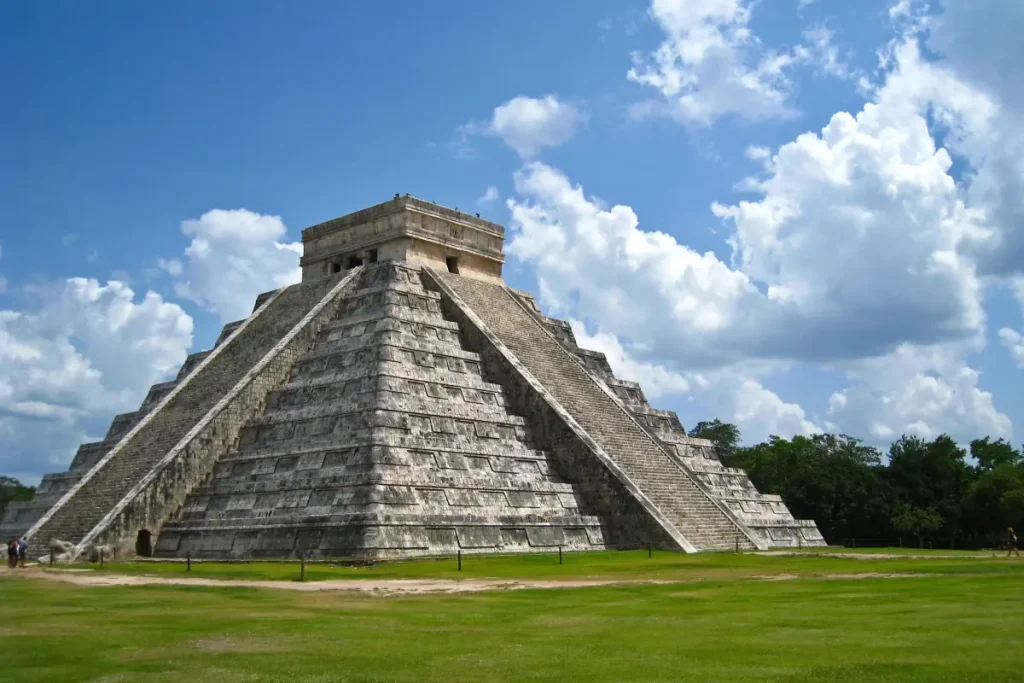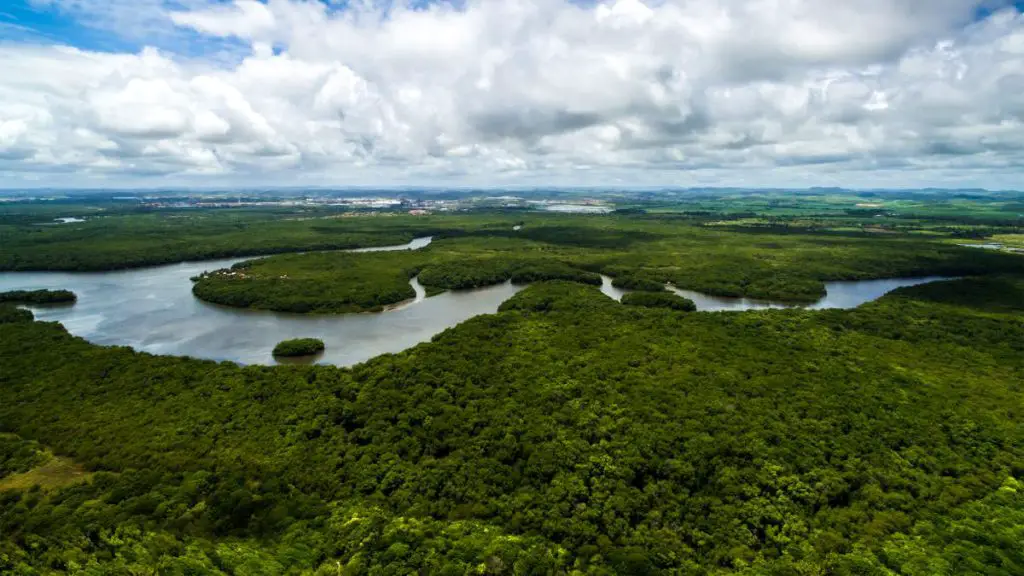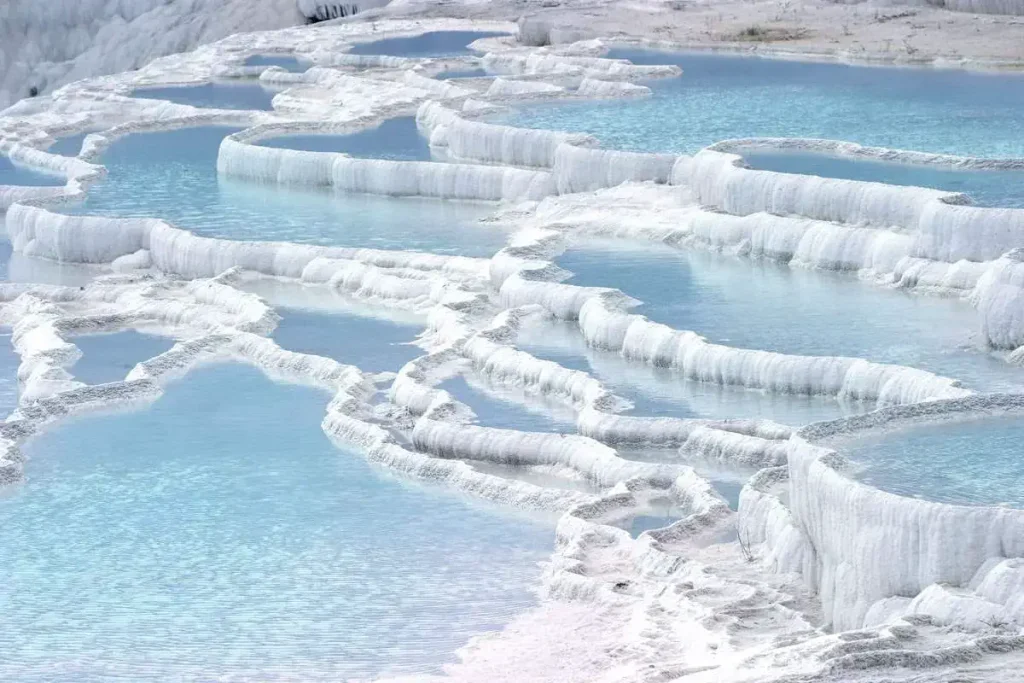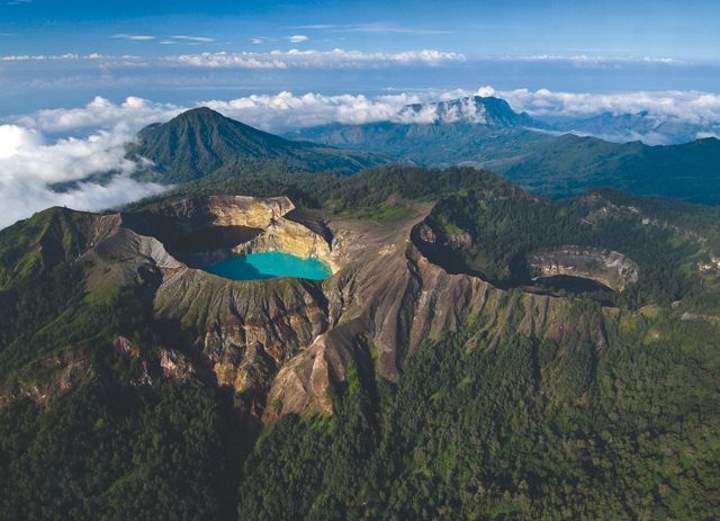In our constantly evolving world, the profound allure and mystique of nature remain timeless, with countless natural phenomena inspiring awe and reverence. The “New 7 Wonders of Nature” is an initiative that brings into focus the planet’s most exceptional natural marvels, chosen through a global poll conducted by the New7Wonders Foundation. These captivating sites, spread across various continents, remind us of the world’s natural beauty and the imperative to protect it. From cascading waterfalls to towering mountains, let’s embark on a journey to explore these stunning sites and their unique ecological significance.
The New 7 Wonders of Nature poll was a global initiative by the New7Wonders Foundation, conducted from 2007 to 2011. It invited people worldwide to vote for their chosen natural marvels from a selection of 28 finalists. The process was Internet-based, via a dedicated website, and phone voting was also an option. Millions of votes were cast during the campaign, leading to the declaration of the New 7 Wonders of Nature based on popular vote, celebrating our planet’s natural beauty.
New 7 Wonders of Nature official list
The New7Wonders Foundation has not publicly disclosed the number of votes each of the winning sites received, therefore the exact ranking order or vote totals aren’t available. So the list below is in alphabetical order.
1. Amazon Rainforest and River [South America]
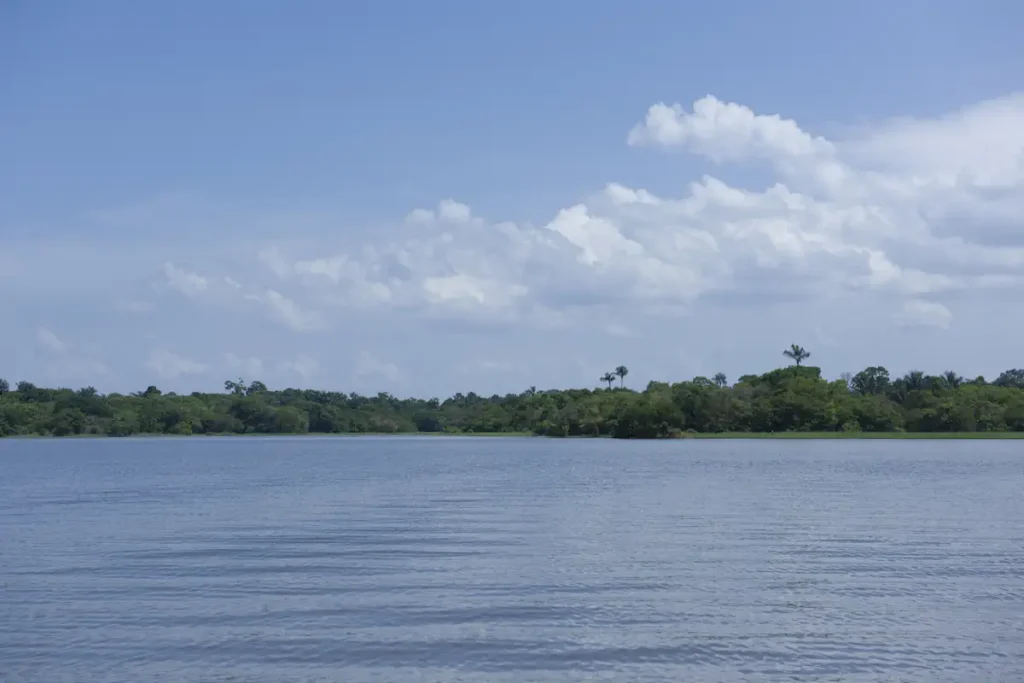
The Amazon River, one of the world’s largest rivers, is the lifeblood of South America. Spanning approximately 4,345 miles (almost 7,000 kilometers), it is second in length only to the Nile. However, in terms of water discharge into the sea, it is unsurpassed – it accounts for about 20% of all freshwater discharged into the oceans worldwide.
The river originates from the Andes Mountains in Peru and traverses through several countries including Colombia, Ecuador, and Brazil before it finally discharges into the Atlantic Ocean. Along its journey, it collects water from over 1,100 tributaries, 17 of which are over 1,000 miles (1,610 km) long.
The Amazon River is also known for its diverse aquatic ecosystem. It is home to more than 3,000 known species of fish, with scientists believing that there are many species yet to be discovered. This includes the river’s most notorious resident, the piranha, as well as the giant arapaima, one of the world’s largest freshwater fish. The river’s basin is also a habitat for a wide array of other wildlife such as jaguars, tapirs, and caimans.
The Amazon Rainforest, also referred to as Amazonia is a lush, tropical rainforest that covers most of the Amazon River’s basin. Spanning over 2.1 million square miles (more than 5,438,975 km2), it represents over half of the planet’s remaining rainforests. It is notably the world’s most biodiverse region, hosting millions of species of insects, plants, birds, and other forms of life, many of which are still undiscovered.
The rainforest plays a crucial role in global climate regulation by acting as a carbon sink, absorbing millions of tons of carbon dioxide emissions each year. However, it faces threats from deforestation and climate change, which lead to loss of biodiversity and habitat, and contribute to global warming.
Both the Amazon River and the Amazon Rainforest are integral to the Earth’s health. They provide a home to a staggering array of wildlife, help regulate the world’s climate, and serve as a source of livelihood for many local communities. Their conservation is of paramount importance for maintaining global biodiversity and climate balance.
2. Ha Long Bay [Vietnam]

Ha Long Bay or Halong Bay is a stunning natural wonder located in northeast Vietnam. Known for its emerald waters and thousands of towering limestone islands topped with lush rainforests, it’s a UNESCO World Heritage site and one of the country’s top tourist destinations.
The name “Halong” translates to “where the dragon descends into the sea,” stemming from a local legend about a dragon that came to protect the local people.
Many of the islands have been shaped over centuries by weather and erosion into incredible formations, some of which contain significant caverns. Among these islands, some are hollow with enormous caves, others support floating villages of fishermen, and some are home to a wide variety of biodiversity including banyan trees, ferns, and a diverse birdlife.
Visitors often take boat tours to explore the bay, with options ranging from short day trips to overnight cruises. Some of the notable islands and sights include Ti Top Island, Sung Sot Cave (also known as Surprise Cave), and the bay’s largest island, Cat Ba, which hosts a national park and some of the area’s few full-time residents.
Halong Bay isn’t just visually impressive, it’s also culturally and historically significant, with archaeological evidence of human presence dating back thousands of years. It’s a place where you can marvel at the power and beauty of nature, explore ancient cultures, and enjoy a truly unique travel experience.
3. Iguazu Falls [Argentina and Brazil]
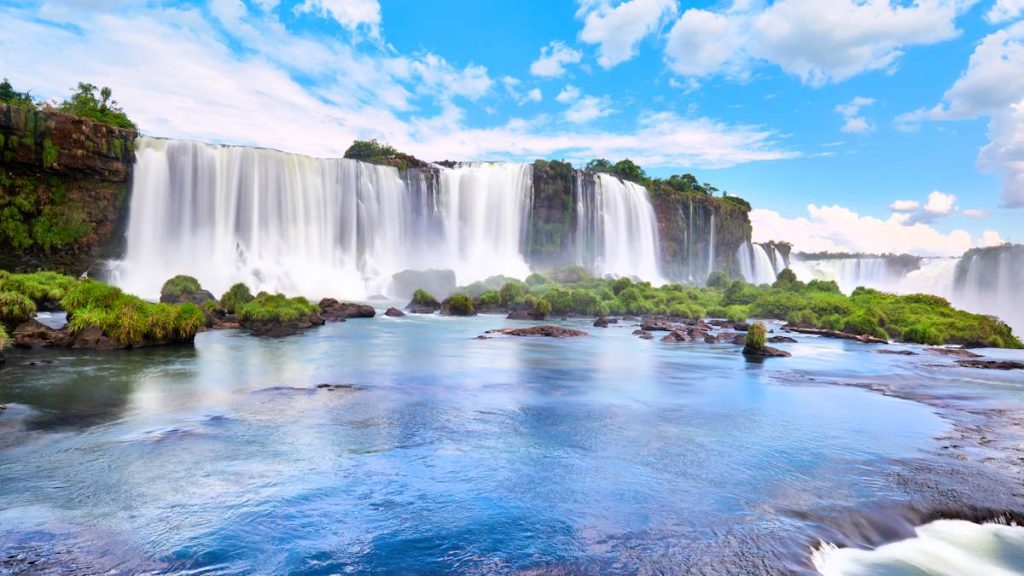
Iguazu Falls or Iguaçu Falls, often considered one of the most spectacular waterfalls in the world, is a UNESCO World Heritage site located on the border of Argentina and Brazil. The falls are part of two national parks: the Iguazú National Park in Argentina and the Iguaçu National Park in Brazil, both renowned for their biodiversity.
The waterfall system consists of 275 distinct falls along 2.7 kilometers (1.7 miles) of the Iguazu River. Some of the individual falls are up to 82 meters (269 feet) in height, though the majority are about 64 meters (210 feet). The most impressive of them all, known as the “Devil’s Throat,” is a U-shaped, 82-meter-high (269 feet), 150-meter-wide (492 feet), and 700-meter-long (3,000 feet) waterfall.
The falls are home to a rich diversity of flora and fauna, with subtropical rainforest surrounding the waterfalls, providing habitat for rare and endangered species of wildlife, including the South American tapir, the giant anteater, the howler monkey, the ocelot, the jaguar, and a variety of rare birds.
Apart from its breathtaking natural beauty, Iguazu Falls is also a hub for adventure and eco-tourism, with activities ranging from boat tours that take you right under the falls, to hiking trails, bird watching, and more. The unique spectacle of Iguazu Falls provides a truly awe-inspiring experience, leaving a lasting impression on all who witness its majesty.
4. Jeju Island [South Korea]
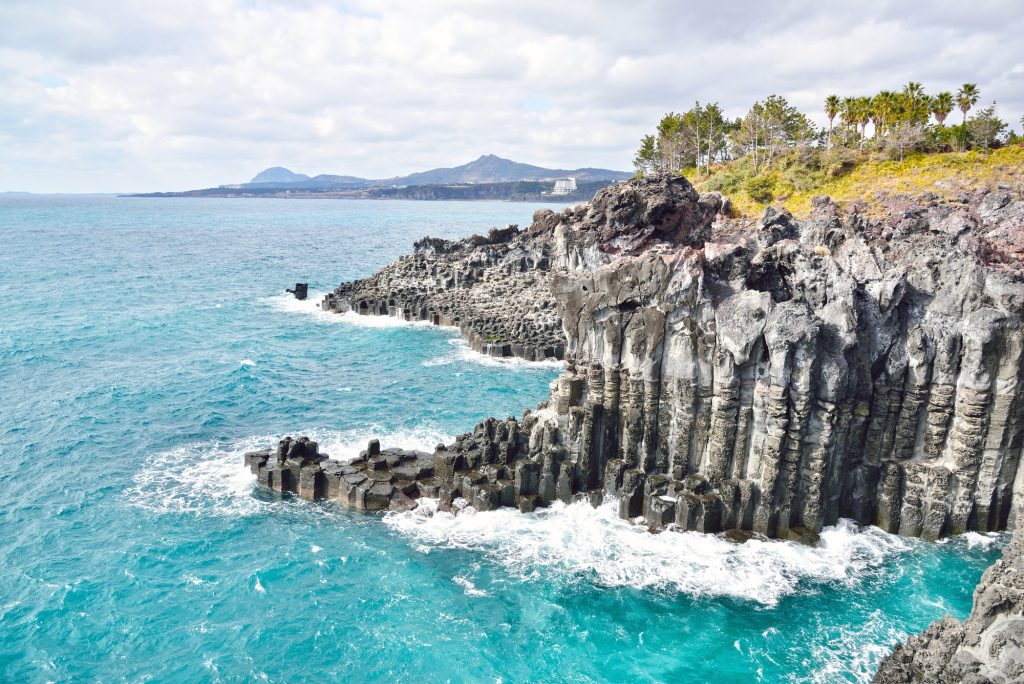
Spanning 1,833.2 km2 (707.8 square miles), or 1.83 percent of South Korea’s total area, Jeju Island is the country’s most sizable island. Nestled in the Korea Strait, it lies south of the Korean Peninsula and South Jeolla Province, with the nearest point on the peninsula being 82.8 km (51.4 miles) away.
The indigenous Jeju people have called the island home since the early Neolithic period, and the Jeju language they speak is currently listed as critically endangered by UNESCO. Interestingly, Jeju is among the few Korean regions where Shamanistic traditions are still well-preserved.
Jeju Island is a volcanic creation, with Hallasan, a 1,950-meter (6,400 feet) volcano, and South Korea’s tallest mountain, standing proudly at its center. The island, stretching 73 kilometers (45 miles) east to west and 41 kilometers (25 miles) north to south, emerged about two million years ago during the Pleistocene epoch, as a result of volcanic activity. The majority of the island comprises basalt and lava.
The Gotjawal Forest, an untouched wilderness spanning roughly 12% (224 square kilometers or 86 square miles) of the island, is a distinct feature of Jeju. It remained unexploited until the 21st century due to its underlying ‘a’a lava base, which made agricultural development challenging. This untouched state has led to the forest developing a unique ecosystem.
‘A’a (pronounced “ah-ah”) is a type of lava flow named from the Hawaiian term that refers to its rough, broken, jagged surface, which is covered with sharp, angular blocks. ‘A’a lava flows are usually hotter and move faster than their counterpart, pahoehoe lava flows. They can be difficult to walk on due to their clinkery surface.
The internal structure of ‘a’a flows is very dense, and the flow advances by crumbling at the front, forming a rough, blocky surface. These characteristics contrast with pahoehoe lava flows, which have a smooth, billowy, or ropy surface. Both ‘a’a and pahoehoe are terms used in volcanology and originate from the Hawaiian language.
The Gotjawal forest also serves as the primary groundwater source and hence the crucial water supply for the island’s half a million inhabitants, as rainwater directly infiltrates the aquifer through the ‘a’a lava cracks beneath the forest.
5. Komodo Island [Indonesia]
Komodo Island is one of the 17,508 islands that make up the Republic of Indonesia. The island has a surface area of 390 square kilometers and over 2000 inhabitants.
Komodo is part of the Lesser Sunda chain of islands and forms part of the Komodo National Park. In particular, the island is famous for its native inhabitant, the Komodo dragon, which is the world’s largest living lizard. Because of its unique biodiversity, Komodo Island has been declared a UNESCO World Heritage Site.
Besides the Komodo dragon, the island is also home to species such as the Timor deer, the main source of food for the Komodo dragon, as well as wild horses, water buffalo, wild boar, long-tailed macaques, and goats. The island’s fauna also includes sea-dwelling species such as whales, dolphins, and sea turtles.
The island’s rugged hillsides of dry savannah and pockets of thorny green vegetation contrast starkly with the brilliant white sandy beaches and the blue waters surging over coral. Due to its distinct ecosystem and its location within the Coral Triangle, Komodo Island offers excellent diving and snorkeling sites.
In 2020, there were discussions about closing the island to tourists to allow for natural recovery and to protect the dragons. However, the Indonesian government later decided to implement a premium tourism model instead, limiting visitors but still allowing some access.

Situated within Komodo Island, there lies a unique spectacle – a beach with pink-hued sand, one of the rare and intriguing seven of its kind in the world (others are Pink Sands Beach, Harbour Island, The Bahamas; Spiaggia Rosa, Budelli, Italy; Elafonisi Beach, Crete, Greece; Horseshoe Bay Beach, Bermuda; Balos Lagoon, Crete, Greece; and Great Santa Cruz Island, Zamboanga, The Philippines). This singular beach, a beautiful natural anomaly, owes its distinct coloration to an extraordinary blend of white and red sand.
The reddish tint originates from minuscule fragments of a marine species known as Foraminifera. These tiny organisms, housing vibrant red shells, flourish within the surrounding coral reefs. Over time, the forces of nature grind these shells into fine particles, blending them with the white sand to create an enchanting shade of pink. This combination paints an unusual and captivating landscape, turning Komodo’s beach into an iconic geological masterpiece that both charms and bewilders its beholders.
6. Puerto Princesa Underground River [Philippines]
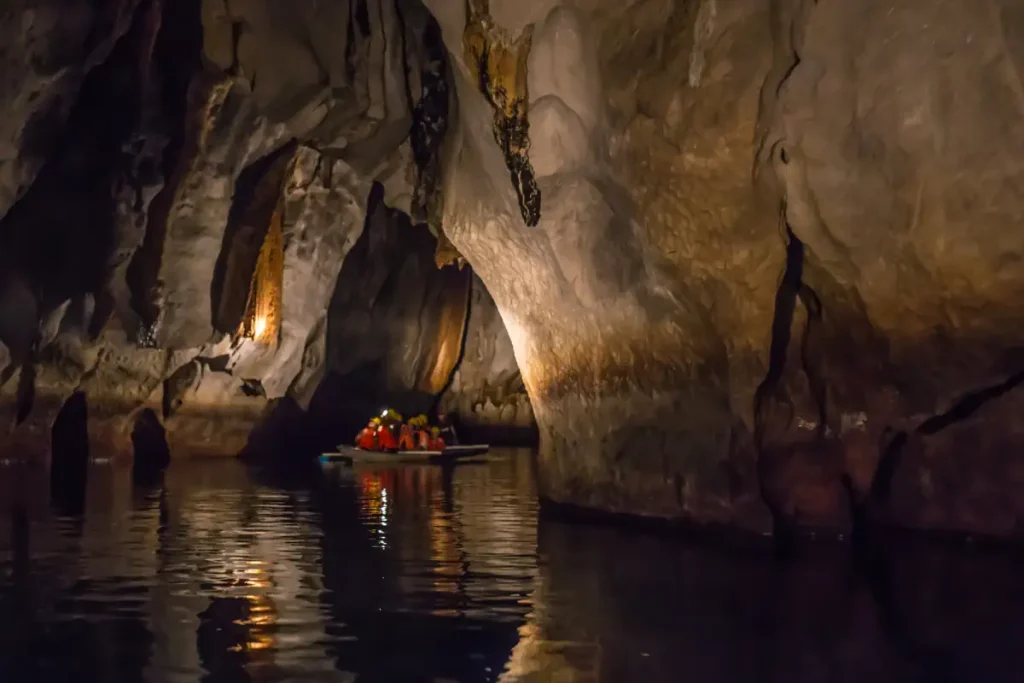
The Puerto Princesa Subterranean River, also known as the Puerto Princesa Underground River, is a UNESCO World Heritage Site located on the northern coast of the island of Palawan in the Philippines.
This stunning natural wonder features an underground river that stretches over 8.2 kilometers (5.1 miles), making it one of the longest navigable underground rivers in the world. The river flows directly into the West Philippine Sea and is surrounded by a lush, protected area known as the Puerto Princesa Subterranean River National Park.
The national park encompasses a full mountain-to-sea ecosystem, with a diverse range of flora and fauna, many of which are endemic to the region. It is home to various species of trees, birds, mammals, and reptiles, making it an important biodiversity conservation area.
The river itself flows beneath the St. Paul Mountain Range and through a cave system filled with remarkable formations of stalactites and stalagmites. This subterranean river system is also unique because it includes a tidal influence zone, where the river water is subject to the ebb and flow of the tides from the sea.
To explore the river, visitors typically take guided paddle boat tours that go about 1.5 kilometers (almost 1 mile) deep into the cave, allowing them to marvel at the breathtaking rock formations and the tranquil waters.
Because of its ecological importance and its striking natural beauty, the Puerto Princesa Subterranean River is a major tourist attraction in the Philippines and a key contribution to the country’s ecotourism industry.
7. Table Mountain [South Africa]
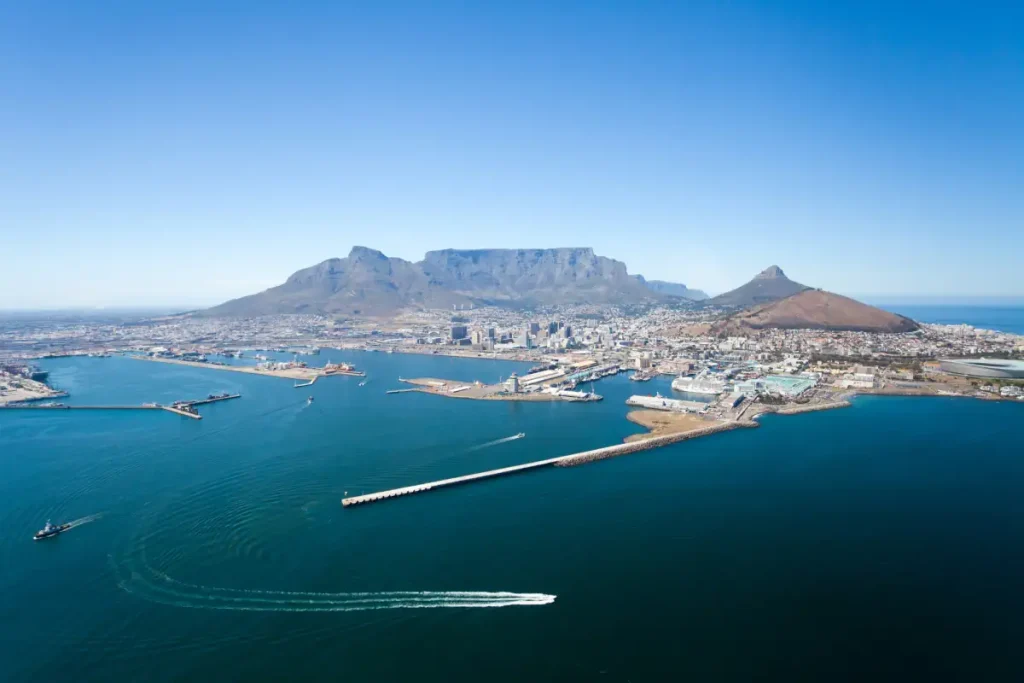
Table Mountain is one of the most well-known and iconic landmarks of South Africa. It is located in Cape Town, towering over the city with its distinctive, flat-topped appearance that gives the mountain its name. The highest point of Table Mountain is 1,086 meters (3,563 feet) above sea level.
Table Mountain is renowned for its rich biodiversity. It forms part of the Cape Floral Region, a UNESCO World Heritage Site, which is one of the richest areas in the world for plants. Despite its relatively small size, this area is home to a diversity of flora that rivals many much larger regions. The majority of the species found here are part of the unique Cape Fynbos biome, many of which are endemic and found nowhere else in the world.
A key attraction at Table Mountain is the cableway that provides visitors with a spectacular ride up to the summit, offering panoramic views of Cape Town, the Atlantic Ocean, and the surrounding landscape. The rotating cable car floor ensures that all passengers get a 360-degree view during the ascent and descent. However, for the more adventurous, the mountain also provides numerous hiking routes of varying levels of difficulty.
Once at the top, visitors can enjoy the spectacular views, have a meal or snack at the cafe, or explore some of the walking trails. Also, be on the lookout for the local wildlife, such as the rock hyrax (also known as dassies), various bird species, and several types of reptiles.
At the foot of the mountain, you’ll find Kirstenbosch National Botanical Garden, another part of the Cape Floral Region World Heritage Site, and considered one of the great botanic gardens of the world.
Table Mountain is more than just a scenic photograph backdrop; it is an outdoor lover’s paradise and an integral part of Cape Town’s identity.
Sources
- New 7 Wonders of Nature official website
- Ha Long Bay on Wikipedia
- Iguazu Falls on Wikipedia
- Jeju Island on Wikipedia
- Komodo Island on Wikipedia
- Puerto Princesa Subterranean River National Park on the UNESCO website
- Table Mountain on Wikipedia
- How Many Elephants are Left in the World in 2025? - August 17, 2025
- Moon Landings: All-Time List [1966-2025] - February 2, 2025
- What Is Max-Q and Why Is It Important During Rocket Launches? - January 16, 2025

